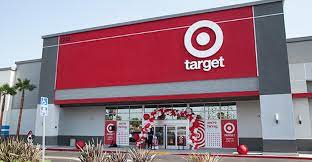In an impressive display of resilience and strategic maneuvering, Target Corporation (NYSE:TGT) has reported a substantial 58% surge in its fourth-quarter profits, surpassing Wall Street’s expectations. This remarkable achievement comes as the retailer adeptly navigated through economic challenges by implementing effective cost-cutting measures and maintaining a lean inventory, showcasing its ability to adapt and thrive in a fluctuating market environment.
Financial Highlights and Revenue Growth
Target’s latest financial results reveal a slight uptick in revenue compared to the previous year, further exceeding analyst projections. Despite a 4.4% dip in comparable sales, which includes metrics from both physical stores and digital channels operating for at least 12 months, there’s a silver lining as the rate of decline seems to be decelerating. This is evidenced by a lesser 4.9% fall in the third quarter and a 5.4% decrease in the second quarter, indicating a potential stabilization in sales dynamics.
Cautious Outlook Amidst Economic Pressures
The Minneapolis-based retailer has adopted a cautious stance regarding its future sales and profit outlook, reflecting the broader uncertainties plaguing the retail sector amidst inflationary pressures and rising borrowing costs. Target’s financial prudence comes at a critical juncture, especially with its annual investor meeting looming, where it’s expected to unveil strategic initiatives aimed at bolstering sales and catering to consumers grappling with financial constraints.
Navigating Discretionary Spending Dilemmas
Target’s product assortment, heavily skewed towards discretionary items such as toys, fashion, and electronics, poses a unique challenge as consumer spending patterns shift due to economic pressures. Unlike Walmart and other discount giants, Target’s reliance on non-essential goods makes it more susceptible to fluctuations in consumer behavior. In response, the retailer has been meticulously working to strike a delicate balance between offering value and maintaining its reputation for trendy, desirable products.
Strategic Moves and New Launches
In a bid to attract price-conscious shoppers without compromising on style, Target introduced the Dealworthy collection last month, featuring an array of everyday basics at competitive prices, with the majority of items priced under $10. Additionally, Target’s collaborations, such as the exclusive jewelry line with designer Kendra Scott and the introduction of its own kitchenware brand, Figmint, have resonated well with customers, adding a layer of exclusivity and allure to its product offerings.
Inventory Management and Membership Program
Acknowledging the lessons from past inventory challenges, especially the overstock situation in the summer of 2022, Target has sharpened its focus on inventory management. The retailer’s strategic adjustments have paid off, allowing it to navigate through excess stock issues more gracefully. Moreover, the announcement of a new membership program, although details remain scarce, signals Target’s ongoing efforts to enhance customer loyalty and engagement.
Robust Financial Performance
For the quarter ending February 3, Target posted net earnings of $1.38 billion, or $2.98 per share, a significant jump from $876 million, or $1.89 per share, in the same period last year. These figures comfortably beat the analyst estimates of $2.42 per share. With a 1.7% increase in revenue to $31.92 billion, the retailer continues to demonstrate solid financial health, outpacing the anticipated $31.83 billion.
Future Outlook and Market Reaction
Looking ahead, Target has set a cautious yet optimistic forecast, with expected comparable sales declines of 3% to 5% for the current quarter. The full-year outlook suggests a slight uptick in comparable sales, ranging from unchanged to a 2% increase, with adjusted earnings per share projected between $8.60 and $9.60. These projections have been met with enthusiasm by the market, as evidenced by a more than 9% rise in Target’s shares in early trading on Tuesday.
In summary, Target’s latest financial report underscores its agility and strategic foresight in navigating the complex retail landscape. By balancing cost-efficiency with a keen eye on consumer trends and preferences, Target not only exceeded expectations but also set a positive tone for its future endeavors in a challenging economic climate.
